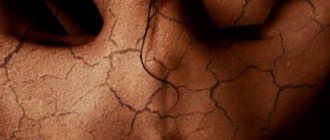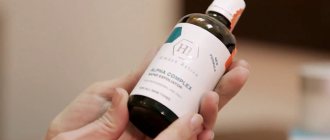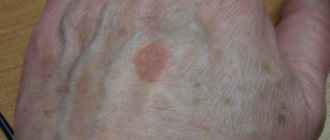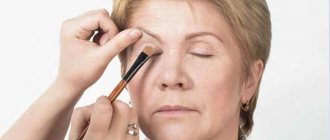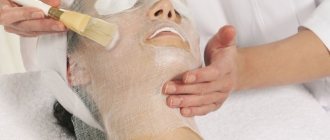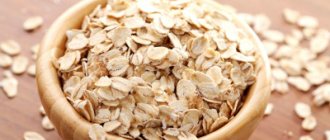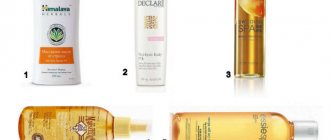How to properly cleanse your facial skin?
How to properly cleanse your facial skin
Proper daily facial cleansing performs several tasks:
- removing decorative makeup;
- removal of dust and chemical compounds deposited on the skin;
- removal of excess sebum along with substances dissolved in it;
- gentle exfoliation of the skin;
- ensuring normal functioning of the sebaceous glands.
At the same time, the cleansing procedure should not destroy the epidermal barrier, disrupt the protective hydrolipidic mantle and lipid layer of the skin, dry out and damage the skin. It is also advisable not to significantly change the pH level on the surface of the epidermis, because this can stimulate the proliferation of fungi and opportunistic bacteria.
A well-chosen care program reduces the likelihood of comedones and pimples, does not lead to dehydration, irritation and dryness of even sensitive skin, ensures a healthy appearance and fresh complexion, allows you to maintain sufficient hydration and reduces the severity of superficial wrinkles.
How to properly cleanse your face - peelings, scrubs and some tips
Peels and scrubs are incredibly important for the skin, as they not only cleanse it, but also speed up the renewal of its cells. However, it is worth knowing that it is not advisable to use scrubs more than once a week. Firstly, if you exfoliate too vigorously and frequently, you can damage your delicate facial skin. And secondly, frequent exfoliation makes the skin “lazy”. Those with sensitive facial skin should also use peelings with caution.
And finally, a few tricks:
- if you use foam, gel or mousse, then cleanse the skin with light patting movements, but not massage - the skin will absorb makeup even more;
- Do not rub tonic lotions or other facial cleansing products into the skin;
- do not combine peeling and cleansing masks immediately after it - this is too aggressive on the skin, it is better to use an anti-inflammatory mask after peeling, and finally apply an emollient cream to the skin.
Cosmetics for cleansing facial skin
The choice of cosmetic product for daily facial cleansing depends on skin type, presence of problems (for example, irritation, acne), personal preference and should be adjusted as necessary.
Cleansers can be divided into:
| Cleansers using water | — cleansers using water (gel, jelly, mousse, foam); |
| Facial cleansers without water | — products for cleansing facial skin without water (milk, lotion, tonic). |
Preference should be given to a cleanser using water, because... When cleansing your face without water, it becomes difficult to wash off the cleansers themselves.
A system for cleansing facial skin without water, using milk and toner, can be used as a temporary measure to care for dry and very sensitive skin, which reacts to contact with water with severe redness and irritation. In this case, after removing the irritation, you should switch to using bottled water for washing.
We are sure you noticed that soap is not on the list of facial cleansing products. Using soap to wash your face leads to the destruction of the skin's hydrolipid mantle and disruption of its natural defense mechanisms (unless, of course, it is soap specifically designed for facial skin care).
However, the question of what to choose - gel or, for example, foam - remains open. Let's try to figure out which form of cleanser is suitable in this or that case.
How to easily remove oil stains from skin
- Powdered chalk.
If the stain is fresh, use this method: simply apply crushed chalk to the stained area, wait 25-30 minutes, then remove the residue with a brush. Of course, you can use baby powder, baking soda, table salt or talcum powder instead. Attention: when removing salt and soda from the surface of a leather product, be sure to blot the stain with a damp cloth, otherwise you may scratch the product. - Dishwasher detergent.
Grease stains that are several days old can be removed with dishwashing detergent. Directions for use: take a sponge, apply the product to it, treat the problem area, then wipe the product with a clean cloth soaked in water. - Laundry soap.
If you cannot get rid of the stain the first time, thoroughly soap it with laundry soap, then rub the stained area with a sponge using gentle, quick movements. When there is nothing left of the grease, wipe the treated area with a damp cloth. Attention: do not keep the soap solution on your skin for a long time, as this may cause it to dry out. If you think that the stain will not be removed the first time, it is better to try to do it on the second or third try. In any case, you should not leave soap on your skin for a long time. You need to remember this. - Lemon juice or onion.
Using these products you can remove oil stains from colored skin. The onion is cut and the problem areas are wiped with a cut, and a soft piece of cloth is moistened in lemon juice and the stains are treated in the same way. - Potato starch.
Dilute the starch with a small amount of water, apply the resulting slurry to the greasy stain and leave for a while. Then take a clean rag, soak it in purified gasoline and wipe the dirty area. After this, absorb the remaining gasoline with bread crumbs. You can also simply sprinkle starch on the stain, wait 20 minutes and brush it off with a brush. - Baking soda.
Method of use: prepare a solution (a teaspoon per 0.5 cup of water), immerse a cotton pad or rag in it, thoroughly wipe the greasy stain, wait a little, then remove any remaining dirt using a dry rag and look at the result. If necessary, repeat the procedure again. Attention: the soda must be completely dissolved in a glass of water, otherwise lumps may damage the material during cleaning. - A solution of ammonia.
Preparation of the solution: mix soap shavings, ammonia and milk in equal quantities (milk can be replaced with ordinary water). Apply the resulting mixture to the problem area, rub a little, then rinse with water. - Alcohol.
Using a rag soaked in alcohol, thoroughly treat the stain. In many cases, this helps solve the problem at hand. Wipes that are specifically designed for cleaning LCD monitors, vodka and other products that contain alcohol can also help you with this.
Be careful: using alcohol or solvent as a cleaning agent can damage the structure of the leather or ruin its appearance. Therefore, before starting the procedure, test the selected product on an inconspicuous area of the product.
Cleansers using water
Cleansers using water
The quality of a cleanser washed off with water is determined by its constituent components, primarily surfactants.
Aggressive surfactants (sodium lauryl sulfate (SLS), sodium laureth sulfate (SLES), sodium myret sulfate (SMS)) are undesirable components in cleansers that destroy the lipid barrier of the skin. The choice should be made in favor of soft surfactants (coco-betaine, cocamidopropyl betaine, coco-glucoside, etc.).
Accordingly, the pros and cons of each group of cleansers that are washed off with water will be associated primarily with the surfactant present in its composition.
| pros | Minuses | Approximate selection | |
| Gel, jelly | Only products with amphoteric surfactants (Betain, Sarsocine, Cocoyl) gently cleanse the skin, but they are expensive | Other products do not cleanse well, dry out the skin, and can be highly allergenic. | oily skin |
| Foam | penetrates deeper into pores, acts more effectively than gel | Disadvantages may be associated with the inclusion of aggressive surfactants (sodium lauryl or sodium laureth sulfate (SLS) | oily skin |
| Mousse | deep penetration into pores, softer effect on the skin than foams | You should also pay attention to the surfactants used | sensitive skin |
Therefore, when purchasing any facial skin care product, you should pay attention to its composition and leave jars containing substances harmful to the skin (aggressive surfactants, mineral oils) on the shelves. Useful components in cleansers are selected individually according to the needs of the skin. They can be hydroxy acids, natural oils, zinc, retinol, etc.
To make the right choice, you will have to study the composition of many cleansers, select suitable ones and test the selected compositions to evaluate the effect specifically for your skin.
Facial cleansers without water
Facial cleansers without water
As we said, cleansing the face without water, using milk and toner, can be used as a temporary measure when caring for dry and very sensitive skin to relieve redness and irritation.
In all other cases, wash off with water (and bottled water if necessary) should be used. Using a toner can be the final step after washing with cleansers.
| pros | Minuses | Approximate selection | |
| Emulsions | Gentle impact | Shallow impact | Dry, irritated skin |
| Milk | Simultaneous humidification | Shallow exposure, harmful components in the composition (for example, mineral oils) | Dry, irritated or aging skin |
| Lotion | Antibacterial effect | Using alcohols that dry out the skin | Problem skin |
| Tonic | Neutralizes the effect of cleansers, normalizes the pH of the skin after washing and prepares it for applying moisturizer. The composition may include hydroxy acids. | Tonic is 95% water |
